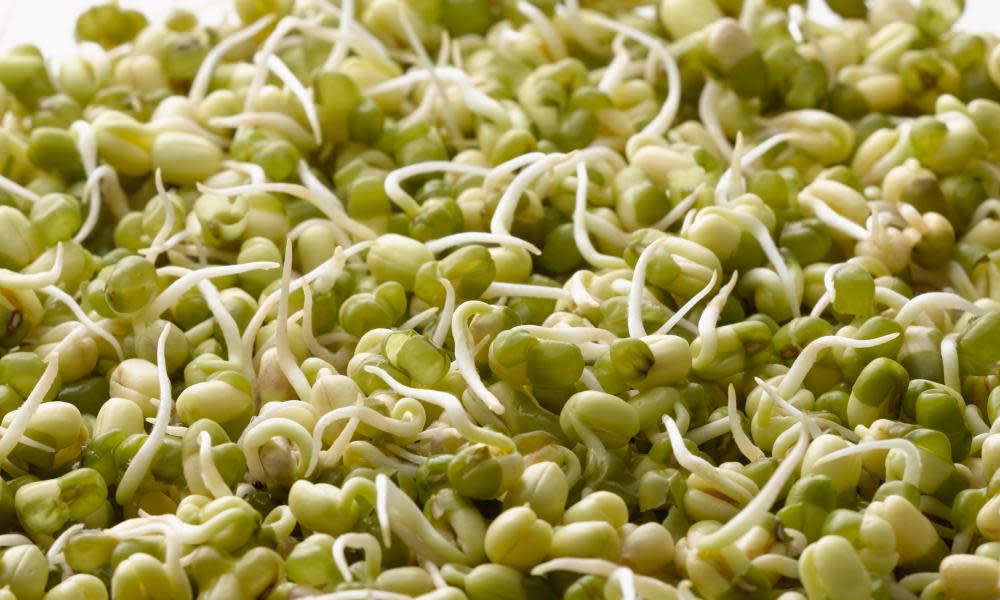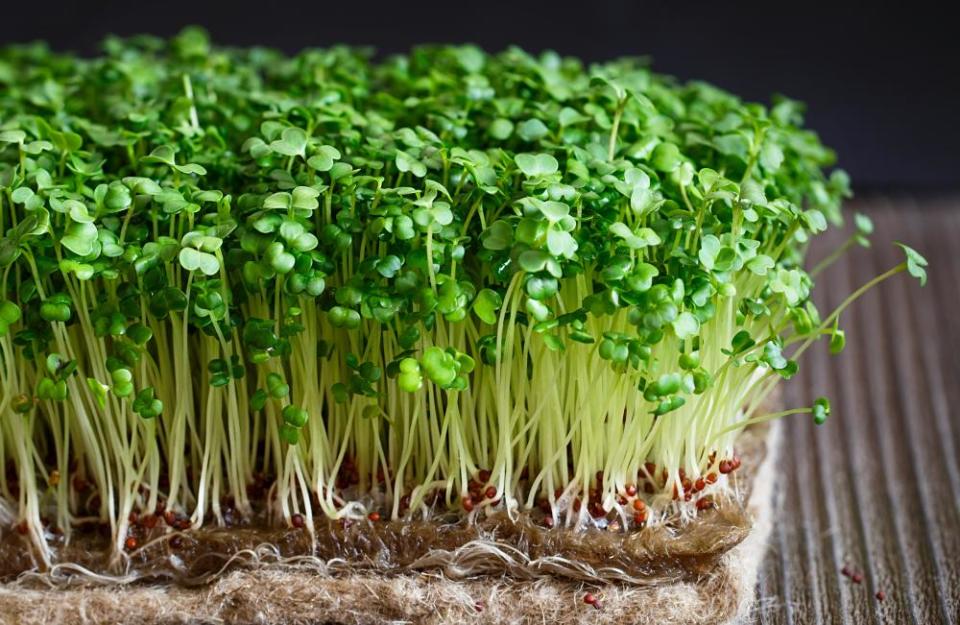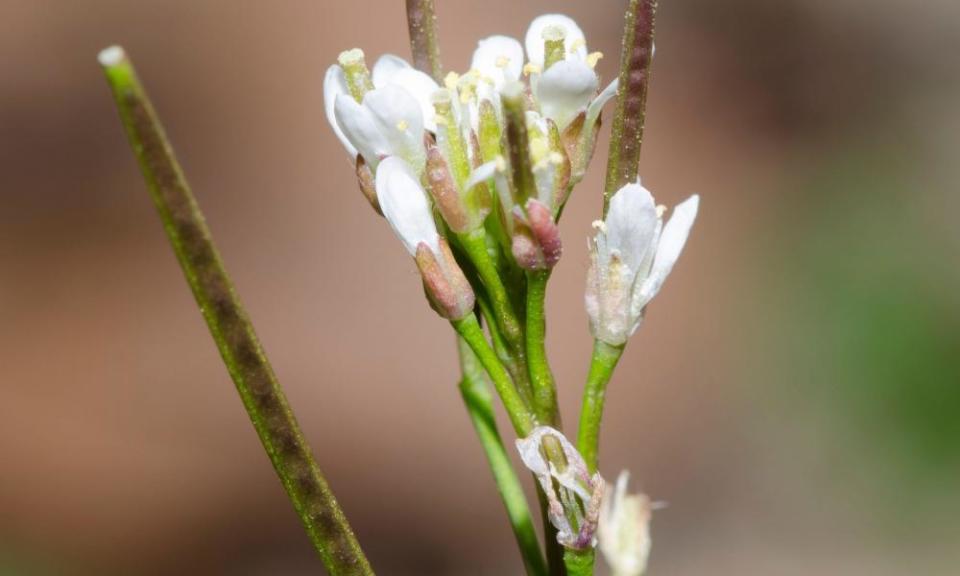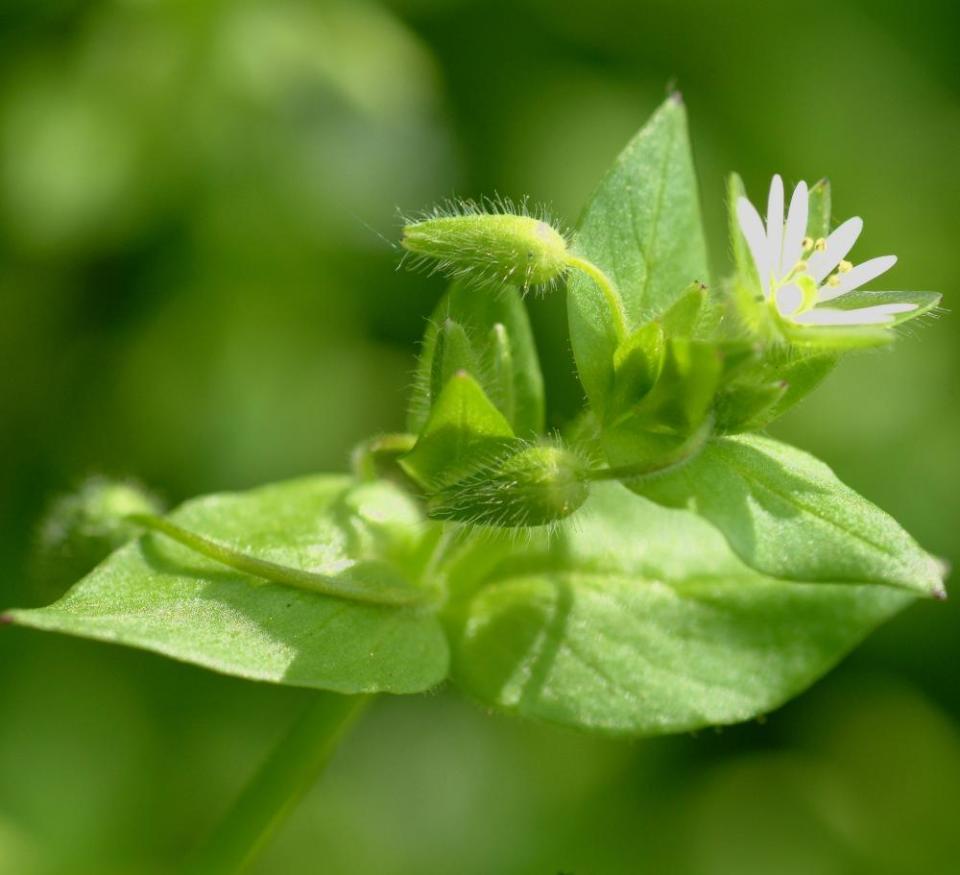Fresh veg hard to come by? Grow your own microgreens

The hungry gap is traditionally that moment when winter stores are dwindling and spring greens are not quite ready: just about now. Of course, when there’s a virus around as hazardous as Covid-19, it takes on a whole new meaning.
You probably have a larder full of pasta and tins by now, and perhaps a freezer full of peas; but fresh greens may be harder to come by. Growing super-quick windowsill greens will allow you to sprinkle nutrients and vitamins over dishes, adding flavour and boosting your immunity. Curried baked beans served with a delicate heap of fresh coriander and kale seedlings is a mighty lot more tasty (and healthful) than without.
Getting your hands on the quickest, nutrient-packed greens doesn’t require you to do any growing, just some weeding. Right now your garden, particularly if you are the sort to shun gardening, is already dotted with free food that is good for you.

Bittercress, Cardamine hirsuta, is one of my favourite salad greens: a tiny rosette-forming weed with a flavour somewhere between wasabi and rocket – and not a hint of bitterness. You can eat it at any stage, but it’s particularly good when in flower, which happens to be now. Look for it in damp spots, around the base of pots and at path edges.
Chickweed, Stellaria media, is rich in vitamin C and a delicious alternative to lettuce; it makes a great base for salads or can be whizzed up raw into a very good pesto for all that pasta. Again, it likes bare ground, damp spots and edges. Both these plants are low-growing and will need a good wash to avoid getting grit in your salad.
Finally, there’s dandelion, an excellent tonic, particularly for the liver, and rich in potassium. Pick the youngest leaves for raw salads. They work well with potatoes, onions, and those tinned sardines you’ve been stockpiling.

If you don’t have a garden, then check the back of your cupboard for something to sprout. Dried mung, adzuki and soya beans, chickpeas, whole lentils, barley, rye, spelt, sweetcorn, kale, fenugreek, radish and mustard seed can all be used, as long as they are seeds suitable for eating (ordinary garden seeds may have been treated with chemicals so are not suitable).
Sprouting will take one to five days. You can eat the whole sprout raw, seed and all, but don’t eat too many of the legumes, raw or cooked, or you’ll get indigestion. You can also try cooking with sprouted chickpeas, beans, spelt, rye and barley. The day after they begin to sprout, use them in the same way you would dried pulses; you’ll find they cook in half the time.

Find a large, clean glass jar, a square of muslin and a rubber band. Discard any seeds that are damaged, then add a handful to your jar. Add at least double the volume of water, and soak overnight, covering the jar with the muslin. In the morning, rinse and drain the seeds. To allow a maximum surface for sprouting, the jar is best laid on its side, propped up slightly so any excess water can drain away through the muslin. Most seeds need a temperature of about 15C to sprout fastest, so room temperature is fine. Twice a day, it is essential you rinse the sprouts. Fill the jar with water, give everything a good swirl around and then refresh the water. Your seeds should sprout quickly; if they linger more than five days, consider them compost.

Microgreens can be harvested at between 10 and 21 days, when they are several centimetres high. These leaves may be small, but they are packed full of nutrients; there’s evidence to show that they have higher levels of antioxidants and other bioactive compounds than mature vegetables.
Parsnips, beans, rhubarb and anything in the Solanaceae family (tomatoes, peppers) cannot be eaten as seedling plants; everything else is fair game. The quickest-growing will be radish and rocket. Kale and broccoli score highly in terms of nutrients (vitamin E) so I would favour them and any other brassicas (brussels sprouts, cabbages, kohlrabi) over lettuce, which would have to be added in huge quantities to make any difference to a dish’s nutritional profile.
Related: Pot to plate: how to set up an indoor herb and veggie garden
The path to flavourful bursts of vitamins and minerals begins with compost, some seeds and something to grow them in. No small plant pots? Raid the recycling bin for yoghurt containers and takeaway trays. It’s fine to reuse compost as well, because the seedlings get everything they need from their own stores and the sun. This is the time to use up all those half-opened packets that are out of date. Most of the seeds will no longer be viable, so sow thickly on the surface of the compost, water in and keep damp until germination. A clear plastic bag or propagator lid is ideal for helping the process along.
Once the seedlings are large enough to handle, snip them off and use as a garnish. To maximise nutrients, do this just before serving your meal. Bon appétit.


